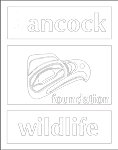How Many Eggs do Bald Eagles Lay?
Number of Eggs Laid: Average 2 per nest.
The average for the west coast eagle populations is almost exactly 2 eggs per clutch. Eagles can lay only one egg but can also lay three eggs and there are some rare records of 4 eggs being laid.
Incubation Period: 35 days.
Most eagles only lay a single clutch of eggs. Each egg is laid about 3 days apart and incubation, the process of the eagles sitting on the egg to bring up the eggs’ temperature, starts with the laying of the first egg. The eggs take almost precisely 35 days to hatch. Since the incubation starts from the time the first egg is laid, this means that the eggs hatch 3 days apart.
Both the male and female bald eagle will incubate the eggs however the female bird, being much larger, takes the longer incubation periods overnight or during cold storms. It is believed that her larger body weight gives her more endurance.
A second clutch of eggs, of usually only 1 or 2 eggs, can be laid if the first clutch is lost within the first week or possibly two weeks of the first egg being laid.
Egg Turning:
The eggs are rolled over by either parent about every hour to 2 hours during the incubation period. The purpose of this roll is to make sure that the lighter yolk does not rise to the egg surface and the delicate blood vessels that cover the yolk touch and stick to the shell surface, killing the developing chick. This egg roll is apparent in our video.
Hatching:
The eggs hatch on or very close to the 35th day. About 4 days prior to hatching the developing chick’s “egg tooth”, a small hard and sharp calcium spike on the top of the bill, pierces the membrane separating the developing chick from the air bubble above the chick. This is called the internal pip. With the chick’s beak now accessing the small amount of air in that chamber the chick takes its first breath. Further air filters into the chamber through the porous egg shell. From this first breath of air the chick gets a burst of energy and scratches a whole through the egg shell to the outside. This hole is called the external pip.
Now the chick has direct access to a continuing supply of air and vigorously starts the final process of hatching. This involves further scratching with the egg tooth of the inside of the shell in a circular path around the egg, weakening the shell as it goes. With this weak line around the entire shell the chick gives a few expansive bursts and the shell parts. The chick is hatched! Within a few hours the egg tooth dries up and falls off. In a few more hours the chick dries off and appears as a fluffy white ball. An eaglet is born!
David Hancock
